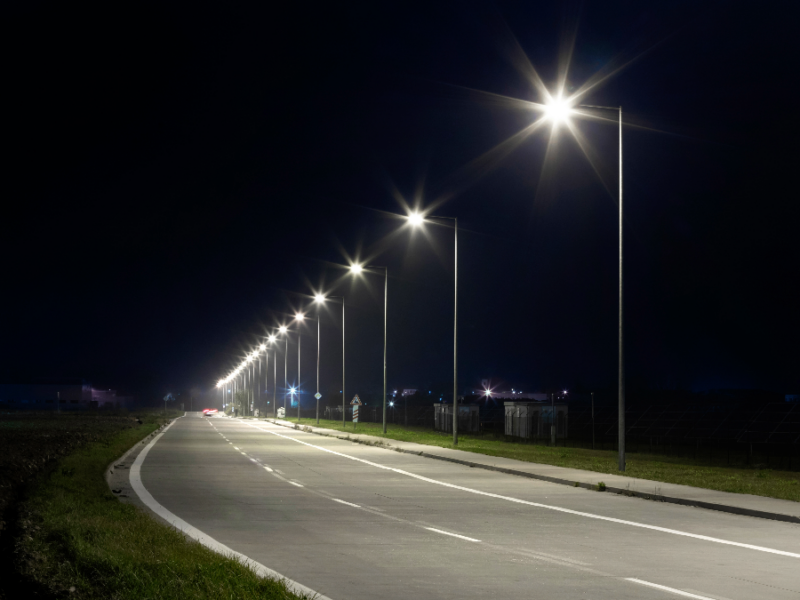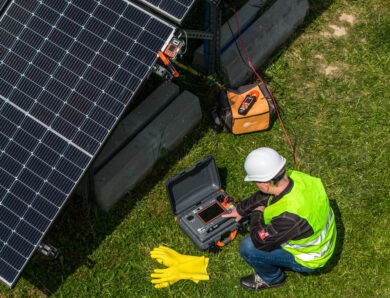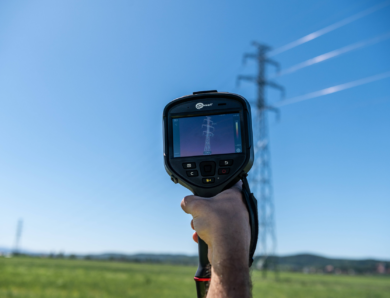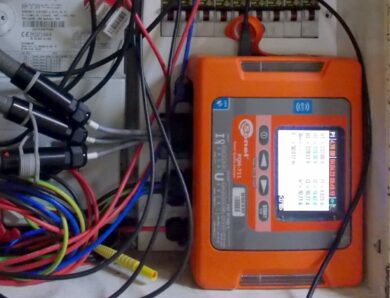
Normative and standard recommendation for modern road lighting
Using the most modern optical solutions and normative recommendation concerning road lighting, the light should be directed exactly to the places of the street which should be illuminated. In this way, the frequent problem of “polluting” urban space with poorly chosen street light, which unnecessarily targets the sky or windows of buildings, disturbs the peace of their residents is eliminated.
The application of the EN 13201:2015 standard when designing road lighting is to ensure safety, speed and lack of traffic disruptions.
Introduction
Safety, speed of reaction, as well as the comfort of traveling for people moving on motorized vehicles, pedestrians, as well as cyclists depends on providing good lighting of roads and streets. Creating the best conditions for observation, while ensuring maximum visibility of obstacles on the road is the scope of EN 13201:2015 “Road Lighting”.
The multi-sheet standard consists of four parts:
- CEN/TR 13201-1: Road lighting – Part 1: Guidelines on selection of lighting classes,
- EN 13201-2: Road lighting – Part 2: Performance requirements,
- EN 13201-3: Road lighting – Part 3: Calculation of performance,
- EN 13201-4: Road lighting – Part 4: Methods for measuring lighting performance.
The first three parts of the standard are important for street lighting design. And so the first part, developed on the basis of the CEN report, allows you to qualify the appropriate lighting situation and choose the lighting class. In the second part of the standard, photometric requirements for individual lighting classes are defined, taking into account the needs of road users and environmental aspects. The third part defines uniform calculation methods, so that procedures and markings are unambiguous. However, the fourth part does not concern the design stage, and defines the principles of making measurements, their conditions and the manner of presentation.
The quantities describing the road lighting
In the case of road lighting where traffic is dominant, the basic factors are:
- luminance level,
- uniformity of luminance,
- limitation of glare,
- visual inspection.
Knowledge of these parameters is essential in the conscious design of road lighting. A very important parameter is the luminance of the surface. Luminance determines the brightness of a given road surface as seen by a moving observer in a specific direction. The luminance value depends not only on the level of light intensity, but also on the type of luminaires, road brightness and reflections from the surface.
In cases where there are roads with less communication significance or these are collision areas, intersections, roundabouts then the standard recommends using criteria based on illuminance. An important parameter is also the glare. It makes even objects properly lit can be invisible. Very strong glare results in temporary blindness and impaired vision of the movement participants, which translates into an increase in the likelihood of an accident.
Lighting classes
The standard EN 13201:2015 divides the road lighting into classes. When determining the lighting class, the designer must take into account a number of factors, i.e.:
- Are the traffic directions separated?
- What type of intersections are there?
- Distances between intersections or engineering objects (bridges, flyovers).
- Are there conflict zones?
- Are there traffic calming measures?
- What is the average intensity of vehicles?
- Is there cycling?
- Does walking occur?
- Are cars parked near the road?
- Is face recognition required?
- What is the ambient luminance?
- Is there an increased risk of crime?
- What is the difficulty of eye-tracking?
Based on these questions, the road class is determined.
Table 1. List of lighting classes
| CLASS | DESCRIPTION |
| M | Roads for motorists (intended for drivers of motorized vehicles on traffic routes of medium to high driving speeds) |
| C | Conflict zones (intended for drivers of motorized vehicles, and other road users, on conflict areas such as shopping streets, road intersections of some complexity, roudabouts, queuing areas, etc.) |
| P | Roads for pedestrians and cyclists (intended for: pedestrian and pedal cyclists on footways, cycleways, emergency lanes and other road areas lying separately or along the carriageway of a traffic route, and for residential roads, pedestrian streets, parking places, schoolyards, etc.) |
| HS | Zones with the required face recognition (used as an additional class in situations where public lighting is necessary to identify people and obstacles in areas of roads with a greater than normal risk of accident or crime) |
| SC | Zones with the required higher sense of security (used as an additional class in situations where public lighting is necessary to identify people and obstacles in areas of roads with a greater than normal risk of accident or crime) |
| EV | Zones with the required higher side visibility (used as additional classes in situations where vertical surfaces should be visible – service stations, multi-level intersections, etc.) |
Principles of performing road lighting measurements
Depending on the given road class, measurements of luminance, glare and measurements of illuminance are made.
In the case of the M class, the function of lighting is driving the driver along the roadway, therefore the basic parameter of the measurement is not the intensity of lighting, but the luminance of the roadway. Luminance measurements are made at design points of the project or the own measurement grids are made.
When using strong light sources in the drivers’ field of vision, check their luminance. The Annex to EN 13201-2, depending on the road class, determines how the glare is measured and its limits. The fTI parameter determines the relative threshold increase for luminance (the most extreme case of glare is LED roadside advertising).
Light intensity measurements are made for class C (conflict zones) and class P (roads for pedestrians and cyclists), where it is much more important to ensure visibility of other road users and obstacles than running a user.
Class C is assigned wherever it is not possible to specify one direction (intersection, pedestrian crossings) or visibility is less than 60 m. Measurements are made to form a measuring grid. The spacing between the lines can not be more than 3 m, and the minimum number of lines is 10. Measurements of illuminance are made at the points of intersection of the lines. Average illumination and uniformity are taken into account. In the P class, in addition, the minimum values.
In other HS, SC zones where face recognition is required or an increased sense of security, semi-spherical and semi-cylindrical illumination is also measured.
Important aspects when designing road lighting (in relation to individual classes)
The implementation of the lighting investment requires an analysis regarding the lighting criteria in the form of required lighting parameters, taking into account individual classes. It is also necessary to analyze economic criteria, which include the costs of lighting implementation and operation.
An important role is the selection of lighting fittings with energetically efficient light sources. The luminaire’s task is to properly orient the luminous flux in accordance with the needs of the illuminated road. The second important issue is the tightness of the luminaire, so that there is no rapid decrease in the luminous efficiency, or dirt on both the reflector and the light source.
Currently, high-pressure sodium lamps and metal halide lamps are used in road lighting. Their wide use was determined by their photometric and performance parameters as well as small dimensions. High-pressure mercury vapor lamps have been replaced by metal halide lamps. The use of metal halides improved the spectral distribution. The luminous efficacy has been increased from 80 to 120 lm/W and color rendering index. They are used in road lighting, eg in city centers due to the white color of light.
However, the most powerful light source is LED light-emitting diodes. The reason for this is very high durability of up to 50,000 hours and high luminous efficacy of up to 80 lm/W (in laboratory conditions up to 100 lm/W). Very good quality LEDs with a white color light achieve a luminous efficacy of 90 lm/W and more, so at the level of the best sodium diesel lamps, and sometimes they exceed the levels of luminous efficiency of high-pressure metal halide lamps with a white light color.
LED lighting diodes are the fourth generation of artificial light sources. The first three generations are: flame, incandescent lamps and discharge lamps. The main advantages of LED sources include:
- very high durability (50,000 to 100,000 hours of lighting),
- wide temperature range of their use (-40 to 850C),
- comparatively high luminous efficiency (For comparison, the luminous efficiency of halogen bulbs is up to 26 lm/W, and modern fluorescent lamps up to 105 lm/W. It is predicted that in the future the size of the emitted luminous flux LED lamps will be 1500 lm with efficiency 150-200 lm/W.),
- the lack of mercury harmful to the environment,
- low voltage supply and the use of insulation class II, which increases safety,
- small dimensions and weight,
- low failure rate,
- the possibility of immediate lighting,
- light free of IR and UV radiation,
- and low operating costs.
Presumably, in the near future, LEDs will replace other light sources due to their many advantages.
Summary
Modern solutions used in street and road lighting change the urban space, increasing the safety and comfort of residents and all people moving its streets. At the same time, they allow city authorities to save energy far. LED street lighting allows you to achieve more than 70% savings compared to currently used fixtures, without the need to give up the quality of light. LEDs provide high-quality white light, reproducing colors in the most natural way that meet the relevant standards relating to street lighting.
Authors: Dorota Kołakowska, Adam Szczepanik – Sonel S.A.





No Comment